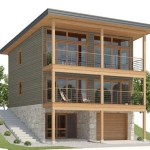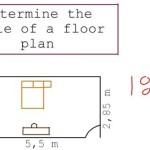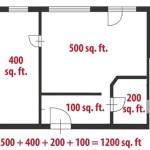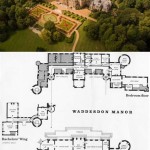```html
Cost of Drawing a House Plan in Kenya: A Comprehensive Guide
Building a home in Kenya is a significant investment, and a well-thought-out house plan is the foundation upon which that investment rests. The cost of acquiring a house plan can vary considerably depending on several factors. This article aims to provide a comprehensive overview of the factors influencing the cost of drawing a house plan in Kenya, offering insights into the different pricing models and considerations for budgeting.
Before delving into the specific costs, it is crucial to understand the value a professionally drawn house plan brings to the project. A detailed plan not only provides a visual representation of the intended structure but also acts as a blueprint for construction, ensuring accuracy and minimizing errors. A well-designed plan also facilitates obtaining necessary approvals from local authorities, streamline the construction process, and ultimately contribute to the overall success of the project.
Key Factors Influencing the Cost of House Plans
Several factors contribute to the final cost of drawing a house plan. Understanding these factors allows individuals to manage their expectations and make informed decisions when engaging with architects or draftsmen.
1. Size and Complexity of the House: The size of the house, measured in square meters or square feet, is a primary determinant of the plan's cost. Larger houses typically require more detailed plans, involving more time and effort for design and drafting. The complexity of the design also plays a significant role. Features like multiple stories, intricate roof designs, custom layouts, and specialized rooms (e.g., home theaters, swimming pools) all increase the complexity and, consequently, the cost.
A simple, single-story bungalow will generally be less expensive to plan than a multi-story mansion with numerous architectural details. The complexity extends to the interior design as well. An open-plan layout may require fewer detailed drawings than a house with numerous distinct rooms and intricate partitioning. Similarly, the need for specialized structural engineering input due to challenging site conditions or unconventional designs will further add to the overall cost. The involvement of additional consultants, such as interior designers or landscaping architects, will also increase the overall project cost, although their fees are usually separate from the core house plan drafting fees.
2. Type of Professional Engaged: The chosen professional, whether an architect, a draftsmen, or an architectural technologist, significantly impacts the price. Architects, being highly trained and licensed professionals, typically charge higher fees than draftsmen. However, an architect's expertise encompasses not only design and drafting but also building code compliance, structural considerations, and project management skills. They can provide a more comprehensive service, potentially saving costs in the long run by preventing costly errors and ensuring compliance with regulations.
Draftsmen, on the other hand, primarily focus on producing technical drawings based on provided designs or concepts. They are generally a more affordable option for simpler projects where complex design input is not required. Architectural technologists occupy a middle ground, possessing a broader understanding of building technology and project management than draftsmen but typically charging less than fully licensed architects. The choice of professional should align with the project's complexity and the level of expertise required. For simple building designs, a draftsman may suffice, but for more complex and unique building projects, an architect is recommended.
3. Scope of Services Required: The scope of services required from the architect or draftsman also affects the cost. A basic plan might only include floor plans, elevations, and a site plan. More comprehensive services could encompass structural engineering drawings, electrical and plumbing layouts, 3D visualizations, and assistance with obtaining building approvals. The more comprehensive the service, the higher the cost.
For instance, if a structural engineer needs to be consulted to ensure the building's structural integrity, their fees will be an additional cost. Similarly, if the client requires assistance with navigating the building approval process, this will also be reflected in the cost. Some architects or draftsmen may offer packages that include permit application assistance, while others may charge separately for this service. It is important to clarify the scope of services and associated costs upfront to avoid surprises later on.
Typical Pricing Models for House Plans in Kenya
Architects and draftsmen in Kenya typically use one of several pricing models when charging for house plans. Understanding these models allows clients to compare quotes and choose the most appropriate option for their project.
1. Percentage of Construction Cost: This model is primarily used by architects for more extensive projects. The architect's fee is calculated as a percentage of the total estimated construction cost. The percentage can vary depending on the project's complexity, the architect's experience, and the scope of services provided. It commonly ranges from 5% to 15% of the total construction cost. This model aligns the architect's interest with the project's success, as their fee increases with the project's value. However, it can be difficult to determine the final cost upfront, as the construction cost may fluctuate during the project.
2. Per Square Meter/Foot Rate: This is a common pricing model, particularly for draftsmen and architectural technologists. The fee is calculated based on the total area of the house multiplied by a predetermined rate per square meter or square foot. The rate varies depending on the complexity of the design and the level of detail required in the drawings. This model provides a more predictable cost upfront, as the area of the house is known. However, it may not accurately reflect the complexity of the design or the time required to complete the plan. For example, a house with a complex roof design may require more work than a house with a simple roof, even if they have the same area.
3. Fixed Fee/Lump Sum: This model involves agreeing on a fixed price for the entire house plan project. It is suitable for smaller, well-defined projects where the scope of work is clear from the outset. The architect or draftsman will assess the project requirements and provide a fixed quote. This model offers the most predictable cost for the client. However, it is essential to ensure that the scope of services is clearly defined in the agreement to avoid disputes later on. Any changes to the design or additional services requested may incur extra charges.
4. Hourly Rate: Some architects or draftsmen may charge an hourly rate for their services. This model is suitable for projects where the scope of work is uncertain or where the client requires ongoing consultations and revisions. The hourly rate will vary depending on the professional's experience and expertise. This model can be less predictable in terms of total cost but offers flexibility for clients who require ongoing support. It is important to track the hours spent on the project to ensure transparency and avoid overbilling.
Budgeting for House Plans and Additional Considerations
Creating a realistic budget for house plans is crucial for successful project planning. In addition to the architect's or draftsman's fees, consider other associated costs, such as:
1. Site Survey: A site survey is necessary to determine the property's boundaries, topography, and any existing features that may influence the design. The cost of a site survey depends on the size and complexity of the site. A surveyor's fees can range based on the size and location of the property.
2. Soil Testing: Soil testing is essential to determine the soil's bearing capacity and stability, informing the structural design of the house. The cost of soil testing depends on the number of samples required and the depth of the testing. These tests are vital to determine the appropriate foundation for the structure, and help to prevent future structural problems.
3. Structural Engineering Fees: For complex designs or challenging site conditions, a structural engineer may be required to ensure the building's structural integrity. Their fees are typically a percentage of the structural cost or a fixed fee. This can be a significant cost factor, especially for multi-story buildings.
4. Building Permit Fees: Obtaining building permits from local authorities is a necessary step before construction can begin. The permit fees will vary depending on the size and type of building, and the location of the property. These are usually calculated as a percentage of the total development cost.
5. Contingency Fund: It is always wise to set aside a contingency fund to cover unforeseen expenses or design changes that may arise during the project. A contingency of 5% to 10% of the total project cost is recommended.
It is also important to remember that the cheapest option is not always the best option. Investing in a well-designed house plan can save significant costs in the long run by preventing errors, ensuring compliance with regulations, and improving the overall efficiency of the construction process. Thorough research and due diligence in selecting an architect or draftsman are essential to ensure a successful project.
Finally, clear communication with the chosen professional is crucial throughout the design process. Clearly define your requirements, budget, and timeline, and be open to their advice and expertise. This collaborative approach will help ensure that the final house plan meets your needs and expectations, while remaining within your budget. A detailed contract outlining the scope of work, payment schedule, and responsibilities of both parties is highly recommended to minimize disputes and ensure a smooth working relationship.
```
House Plans In Kenya The Concise 3 Bedroom Bungalow Plan David Chola Architect

House Plans In Kenya The Budget 3 Bedroom Bungalow Plan David Chola Architect

5 Excellent House Plans In Kenya For 2024

How Much Does A 3 Bedroom House Cost To Build In Kenya West Real Estate Property L Affordable Plans Smart Bungalow Floor

3 Bedrooms House Plans In Kenya S Available

House Designs In Kenya Plans

3 Bedroom House Plan A001 Plans Design Kenya

Cost Breakdown For Building A 3 Bedroom House In Kenya

The 4 Bedroom Kenani Mid House David Chola Architect

Four Bedroom House Floor Plans For Your Dream Home Building In Kenya
Related Posts








